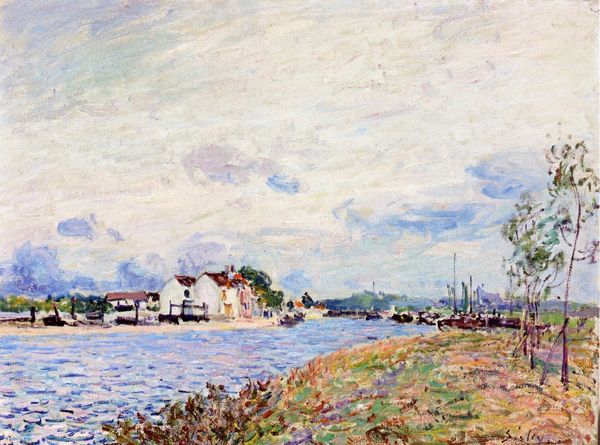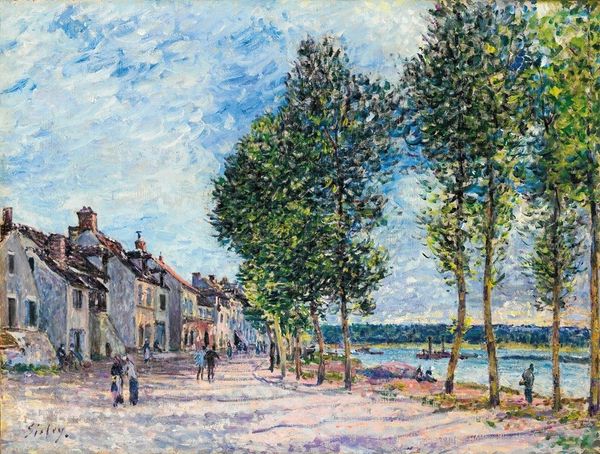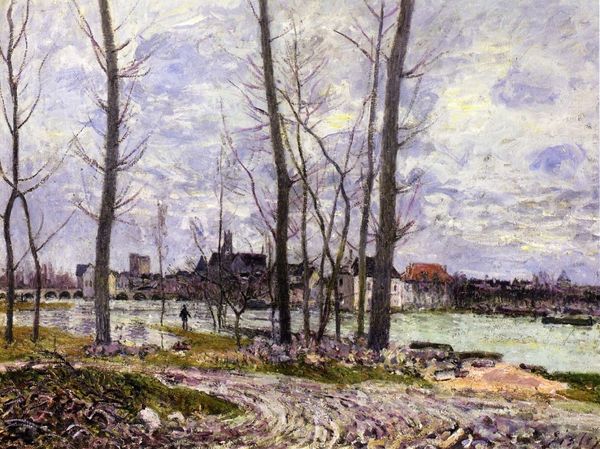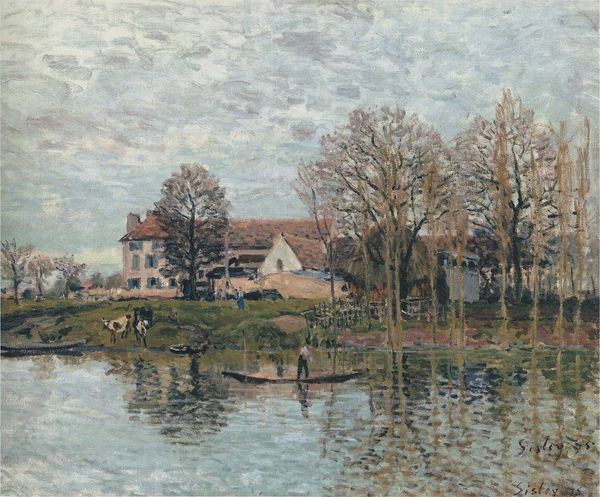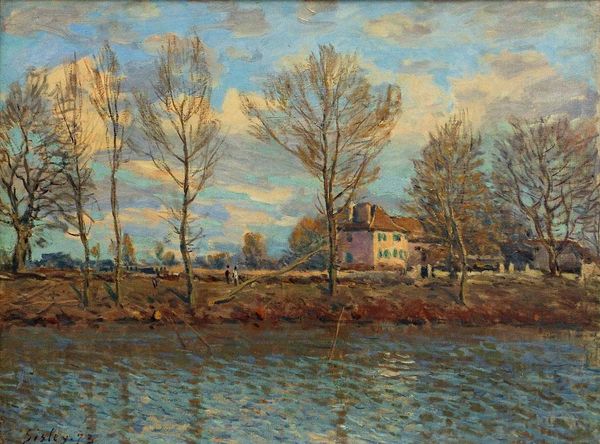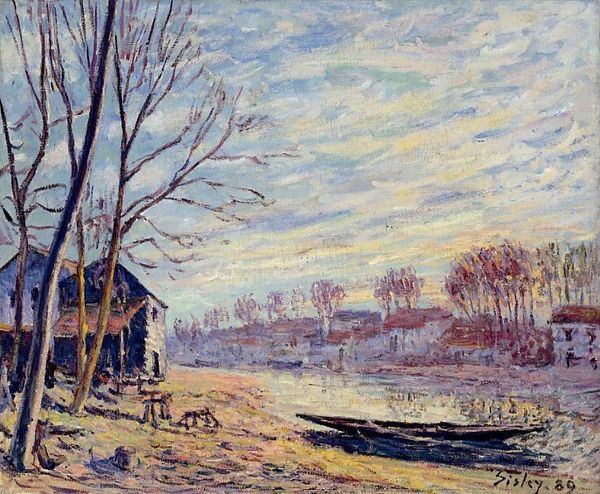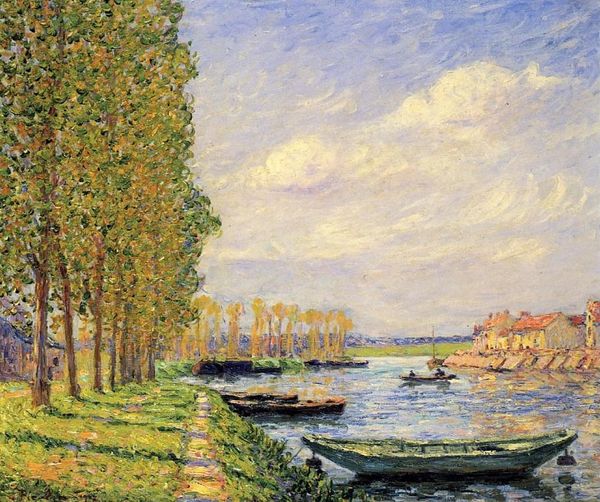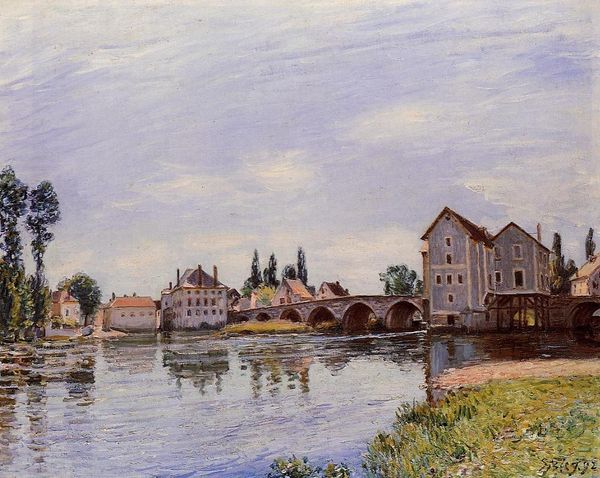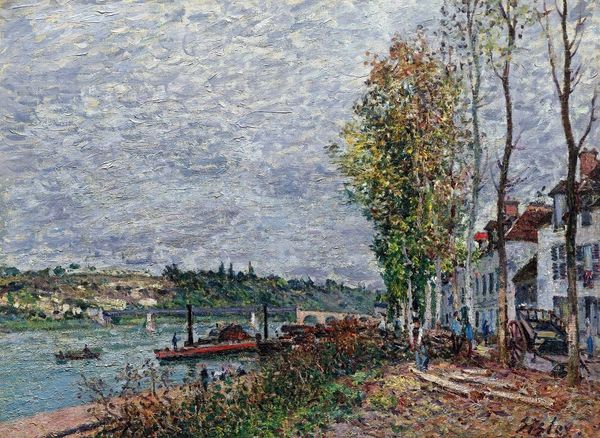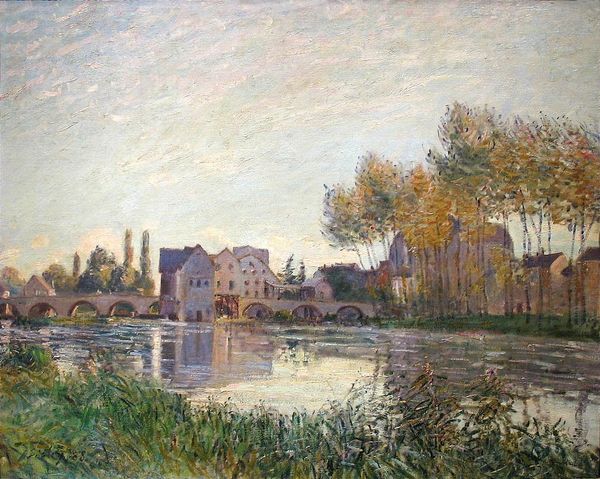
oil-paint
#
impressionist
#
impressionism
#
oil-paint
#
landscape
#
impressionist landscape
#
oil painting
#
cityscape
Copyright: Public Domain: Artvee
Editor: Alfred Sisley’s "Vue de Moret," painted in 1889 using oil paints, strikes me as a study in contrasts. The skeletal trees in the foreground offer such a stark visual departure from the soft reflections of the buildings in the water. What catches your eye when you look at it? Curator: Immediately, it’s the dynamic interplay of horizontal and vertical lines that command attention. Observe how Sisley utilizes the verticals of the bare tree trunks to disrupt the otherwise tranquil horizontality of the river and the cityscape beyond. Do you perceive how this strategic compositional choice might influence the viewer's gaze? Editor: I see what you mean. The trees force my eye to move up and down, which then makes me notice the way the colors are almost mirrored between the sky, the town, and the river. Is it fair to consider how Sisley’s application of color contributes to this effect? Curator: Precisely. Notice the fragmented brushstrokes, each a distinct unit of color, applied in a manner that prioritizes the sensation of light over the delineation of form. It invites the viewer to participate in the act of seeing. In effect, it captures a fleeting atmospheric condition. This is, arguably, the hallmark of Impressionism. Editor: It's interesting to consider the tension between these tangible, structural elements – the lines and brushstrokes – and the ephemeral qualities you described. I'll definitely look more at how artists use line to guide our experience. Curator: Indeed. Through an awareness of how formal elements function, our encounter with the artwork moves from mere recognition to considered reflection.
Comments
No comments
Be the first to comment and join the conversation on the ultimate creative platform.
